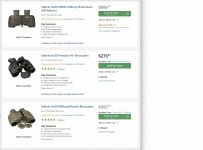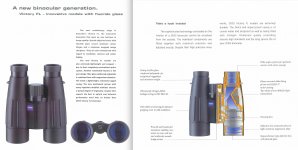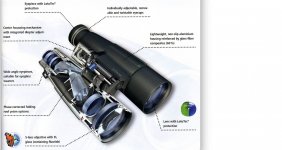John A Roberts
Well-known member

One way to reduce cost and save weight in binoculars is by the use of various plastics for structural components.
But there may be tradeoffs . . .
A current eBay listing by bavarian-motor-works shows a Leupold BX-2 Alpine HD 8x42 that’s become a contender in the optical world’s Darwin Awards.
The text notes 'unit is new but it's broken (into) two piece as you can see in the pictures'. There's no explanation as to what happened.
And it goes on to show Leupold’s advertising copy:

Although sold as a Leupold product, it is of course similar to products offered by other companies . . .
John

But there may be tradeoffs . . .
A current eBay listing by bavarian-motor-works shows a Leupold BX-2 Alpine HD 8x42 that’s become a contender in the optical world’s Darwin Awards.
The text notes 'unit is new but it's broken (into) two piece as you can see in the pictures'. There's no explanation as to what happened.
And it goes on to show Leupold’s advertising copy:

Although sold as a Leupold product, it is of course similar to products offered by other companies . . .
John

Last edited:












